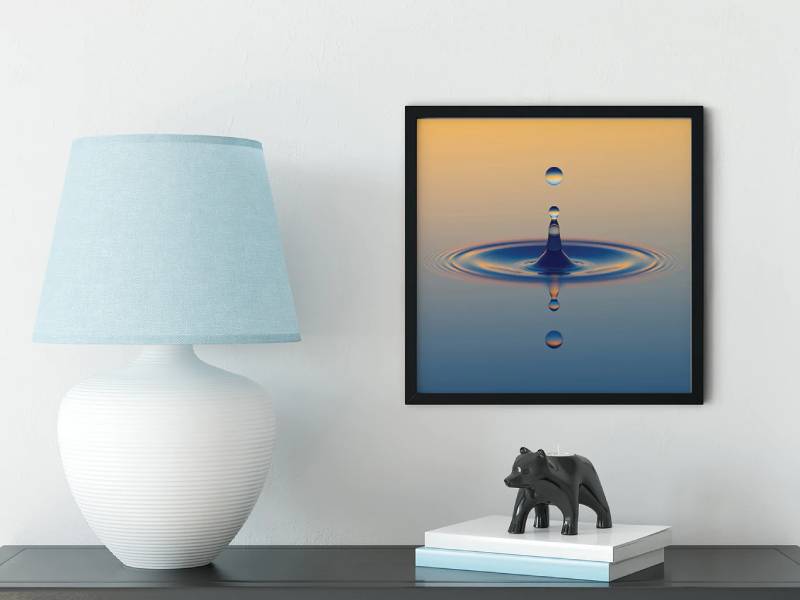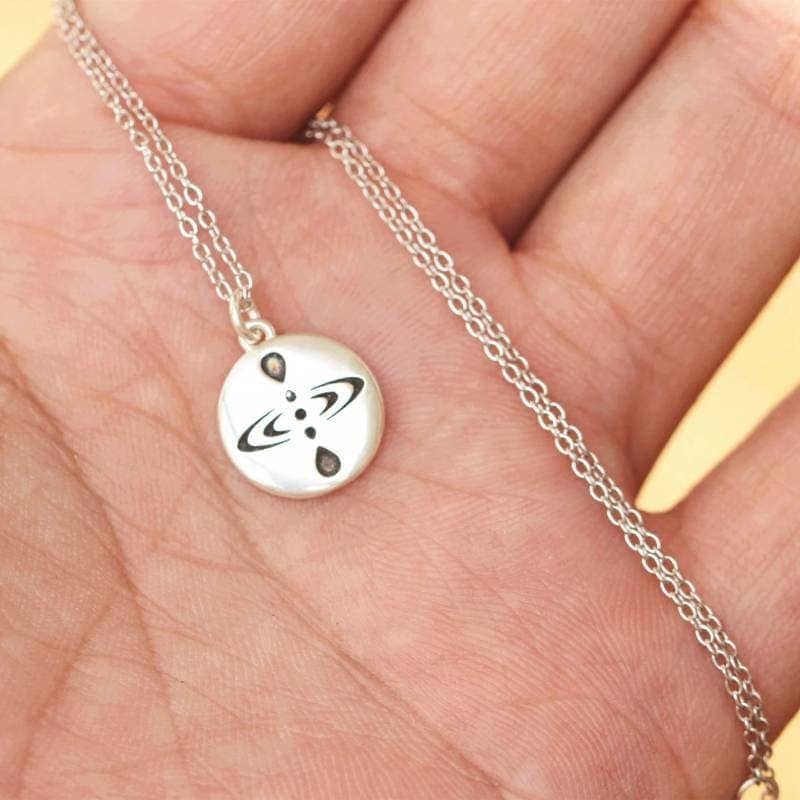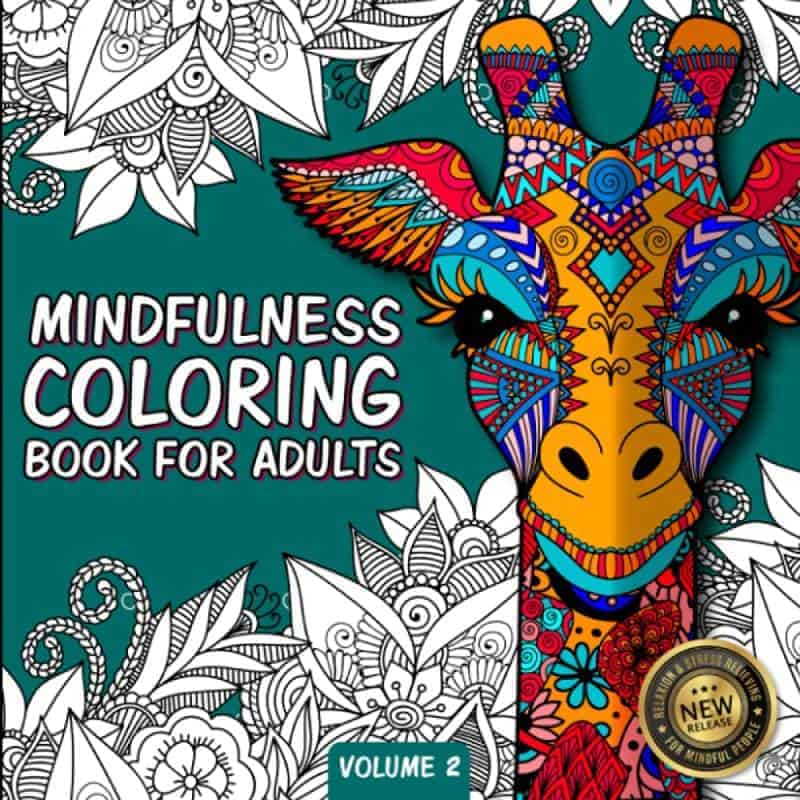Mindfulness is a term that most of us are now familiar with. To be mindful means to pay full attention to what is happening in the present moment. While it sounds simple, we often spend our days in a loop of thoughts about the past or future.
The mindfulness symbol serves as a reminder to check in with our current mental state, and mindful practices like yoga and meditation boost our long-term mental health. So let’s explore how we can use the mindfulness symbol and what activities and techniques can help us cultivate more presence and awareness.
Contents
- 1 What Does It Mean To Be Mindful?
- 2 What Is The Mindfulness Symbol?
- 3 How Does The Mindfulness Symbol Represent The Present Moment?
- 4 Where Did Mindfulness Come From?
- 5 How To Use The Mindfulness Symbol In Your Life
- 6 How To Practice Mindfulness
- 7 Final Thoughts On The Mindfulness Symbol And Practicing Mindfulness
What Does It Mean To Be Mindful?
Take a moment to consider your most typical thoughts each day. Do you think predominately about past, future, or present events? Chances are it’s not the latter.
We may worry about something we said in yesterday’s meeting or mull over an argument we had with our spouse last night. Alternatively, our focus may be on everything we have to do by the end of the week or the upcoming big presentation. When we aren’t having anxious thoughts like these, we’re most likely daydreaming of our next vacation or getting nostalgic about “better times.”
As you can see, we spend very little of our day in the present moment. The less time we spend in the here and now, the more stress and anxiety we are likely to feel. This is where mindfulness comes in. By doing mindful activities or reminding ourselves to be present, we slowly become more in the here and now, and our minds become less consumed by past and future events.
What Is The Mindfulness Symbol?

Just like there are sacred symbols found in most spiritual practices, mindfulness has a unique symbol. The symbol for mindfulness is less well-known than others, like Yin and Yang. Still, it serves as an essential prompt for anyone who practices mindfulness.
At first glance, the mindfulness symbol looks like a simple water drop. However, this unique design has a deep meaning, perfectly representing the concept of mindfulness. The mindfulness symbol is a visualization of the present moment.
Mindfulness teaches that the present is the only time that is controllable. Thus, the symbol for mindfulness serves as a reminder to use the present moment wisely and not waste it thinking about the past or future. So, when you see the logo, bring your attention back to the here and now and observe your surroundings.
How Does The Mindfulness Symbol Represent The Present Moment?
The water drop image can be broken down into five parts. Firstly, the upside-down drop at the top represents the future, while the bottom drop represents the past. Then, the small black dot in the center represents the present or the here and now.
The puddle is formed by curved horizontal and vertical lines, which also carry profound meaning. The vertical forms represent time as these lines move between the past and future. The horizontal forms represent space, indicating that time has stopped.
The aspect of water in the symbol also has significance. This is because being mindful is like being still water. When water is still, it is simply resting and being. Then, when a water drop splashes into the still water, it initially causes movement and noise. However, it then quickly settles and becomes still again. This is in line with how we seek to manage our thoughts and feelings, allowing them to come and go before returning to stillness and peace.
Where Did Mindfulness Come From?

The concept of mindfulness has been around for thousands of years, with roots in Buddhism and Hinduism. For example, mindfulness is closely linked to the Buddhist principle of Sati, an integral part of meditation and contemplation where you maintain awareness of bodily and mental sensations.
However, the concept of mindfulness as we know it today only became popular in the western world in the 1960s.
Because modern-day mindfulness practice is relatively new, the mindfulness symbol is also fairly recent. A Lithuanian graphic artist named Cibulskisa invented the mindfulness symbol as a visual aid to help people meditate and as a reminder to stay anchored to the present.
The symbol is now widely accepted and regularly used by psychologists, philosophers, and spiritual guides, representing a non-religious meditation and mental health practice.
How To Use The Mindfulness Symbol In Your Life
You can incorporate the mindfulness symbol into your daily life to have regular reminders and prompts to connect to the present moment. Here are a few ideas on how.
Display It In Your Home

An easy way to make the mindfulness symbol visible in your home is to print it and display it as wall art. You can use an image from Google; however, many of those lose quality when printed as a poster or canvas size.
A better alternative is to pay a small fee to download high-quality files such as this Digital Mindfulness Print on Etsy. You’ll receive three instant download high-resolution files with 300 dpi in three different sizes; 8×10, 16×20, and 24×36.
Or, if you prefer ready-printed mindfulness wall art, check out this beautiful framed artwork by Mindful Walls.
Wear Mindfulness Jewelry

Nowadays, jewelry with sacred symbols like the OM sign is trendy. Wearing a necklace or bracelet with the mindfulness symbol is a great way to stay connected to the idea of mindfulness when you are out and about, traveling, and at work.
Pamala Jewelry on Etsy has a beautiful Sterling Silver Mindfulness Necklace. Made with 925 Sterling Silver, it has a dainty 18-inch chain and a pendant displaying the mindfulness symbol. Five different pendant sizes are available, from 8mm to 25mm.
Pamala Jewelry also does a minimalist style Sterling Silver Mindfulness Bracelet. It features a 12mm 925 sterling silver pendant with the mindfulness symbol on a simple adjustable black cord.
If you have a flair for creativity, you can also create mindfulness jewelry. For example, with this GOLRAY Jewelry Making Kit, you can choose your own mindful word to help you stay focused and incorporate it into a bracelet.
Get A Mindfulness Tattoo
If you’re not a jewelry fan or like to display art on your skin, why not consider a mindfulness tattoo. While you can get the mindfulness symbol as a permanent tattoo, there are also many temporary mindfulness tattoos available. For example, this small Mindfulness Symbol Temporary Tattoo measures just 3cm x 3cm and lasts 2 to 5 days, so it is fab if you want to try out what it looks like on your skin.
How To Practice Mindfulness
While displaying the mindfulness symbol may serve as a reminder to be more present, several mindfulness activities and practices can help you develop deeper awareness.
Meditation

Meditation is the most common way of practicing mindfulness. It helps you slow down the thoughts in your mind, connect to your breath and become more aware of sensations in your body. Regular mindfulness meditation can help reduce negative thoughts, lower stress levels, and ease anxiety.
The goal of mindfulness meditation is to become fully aware of what is happening in the present moment without any judgment. For example, you should observe sounds you can hear but not react emotionally. Of course, this can be incredibly difficult if you hear loud, unpleasant noises like construction work, a dog barking, or a baby crying.
The 10-Minute Mindful Meditation by Daily Calm is an excellent introduction to this style of meditation. It is accessible for all levels, including those who have never meditated.
I also recommend the book “Practicing Mindfulness” by Matthew Sockolov. It contains 75 mindfulness meditations to help you reduce stress and find more presence and focus. The book is like a mindfulness journey, taking you from absolute beginner to Zen master. The first practices are highly accessible and last around five minutes. As the book progresses and you gain more understanding, the exercises grow, building on the previous lessons.
What’s more, while some meditations are for general awareness and calm, there are guided meditations for specific situations or difficult emotions, like anxiety, anger, or frustration. Thus, the book is an excellent tool for learning how practicing mindfulness can help you navigate your life and stay centered amidst daily stressors.
Yoga

Yoga is a brilliant practice for connecting to the present moment and developing a greater awareness of your body and mind. Yoga teaches you how to tune into your breath, notice bodily sensations and concentrate on your movements at that moment. Thus, like meditation, yoga helps to calm the mind and find a sense of inner peace and stillness.
I recommend this short 15-Minute Yoga For Mindfulness Practice. It features gentle, grounded stretches and meditative moments of stillness to help you find your center and return to your day with a worry-free mind. Or, for a longer flow, check out this 40-Minute Mindful Vinyasa Flow with mudras, affirmations, intentional asana sequencing, and a body scan meditation to help you find more presence.
Journaling

Journaling is an excellent way to clear your mind as it allows you to jot down your thoughts and feelings, which helps you let go of worries and negativity. In addition, consistent journaling helps you get to know yourself better and understand your common thought patterns, limiting beliefs, and self-sabotaging behaviors. As it is a self-care practice, the aim is to observe these things with compassion rather than judgment.
If you’re new to journaling, fear not, as there are many brilliant mindful journals with helpful and thought-provoking writing prompts. For example, The Mindfulness Journal has 365 daily prompts divided into 52 weekly mindfulness topics, helping you explore every aspect of your being. The prompts are fun, engaging, and unique, so you’ll never get bored and, instead, will look forward to your daily journaling session.
Another interactive journal is The Mindful Life Journal. It follows a time-tested method of spending 7 minutes daily reflecting on your thoughts, emotions, and intentions.
You’ll find simple, practical prompts and fun illustrated exercises each day. Doing these will help you cultivate a more focused, productive, and happy life where you live in the present moment. The journal also includes twice-daily gratitude, almost 100 inspiring quotes, guidelines, and a cheat sheet.
Mindful Coloring

Another idea of mindfulness practice you can try is coloring. You may think that coloring is just for kids, but this creative activity has many mental health benefits. First, it helps you be more mindful as it requires you to focus on what you are doing and stay in the moment. It also allows you to disconnect from stressful or anxious thoughts.
Coloring is also an excellent opportunity to practice not being judgemental of yourself and coloring without expectations. Remember that the goal is to practice presence rather than to create a magnificent piece of art.
Nowadays, you can find many mindful coloring books for adults with different designs like mandalas, animals, or nature. This Zen Coloring Book For Mindful People has 50 unique animal and nature designs in mandala style. Doing one a day will help you boost your creativity while finding calm, balance, and presence.
Thus, if you’re seeking a mindful activity but feel meditation is not for you, why not buy yourself an adult coloring book?
Final Thoughts On The Mindfulness Symbol And Practicing Mindfulness
The mindfulness symbol serves as a reminder to connect to the present moment. It’s beneficial during daily life when we get so caught up in minor problems and stressors, worrying about the past or anticipating the future. When we see the mindfulness symbol, we remember that all that exists is the here and now, and the only moment we have the power to change is this one.


